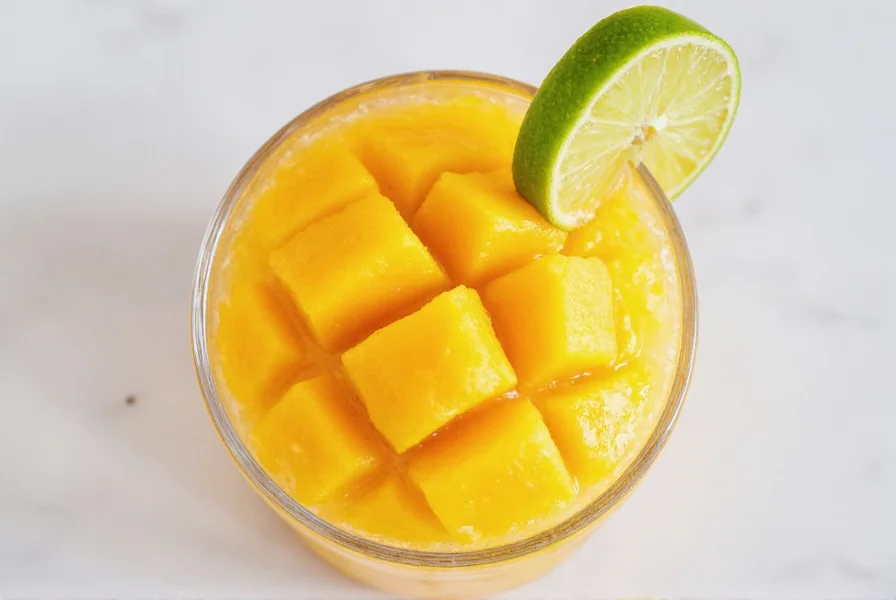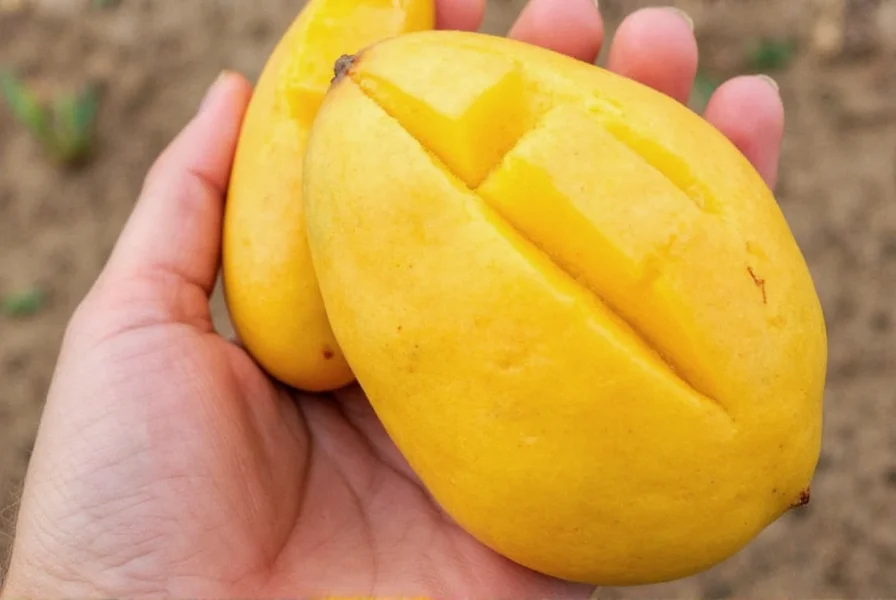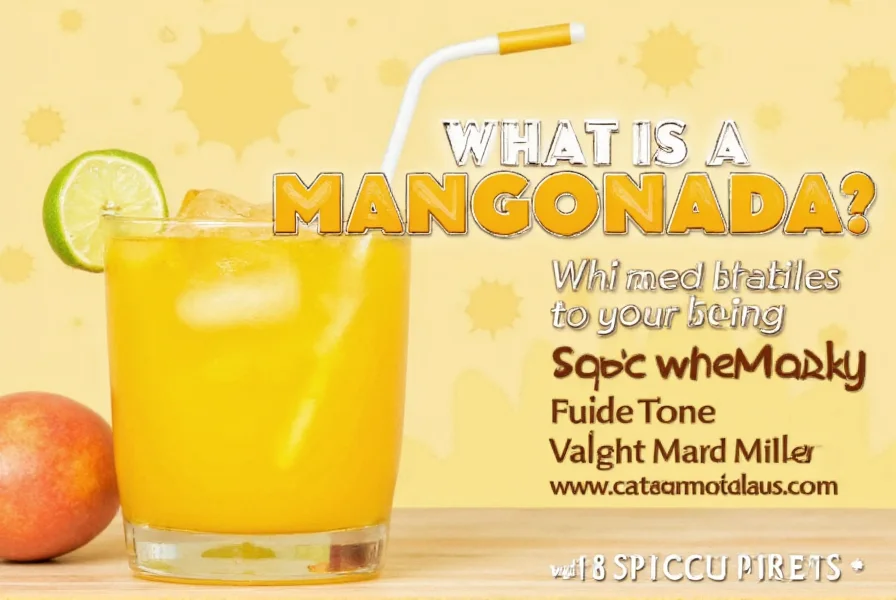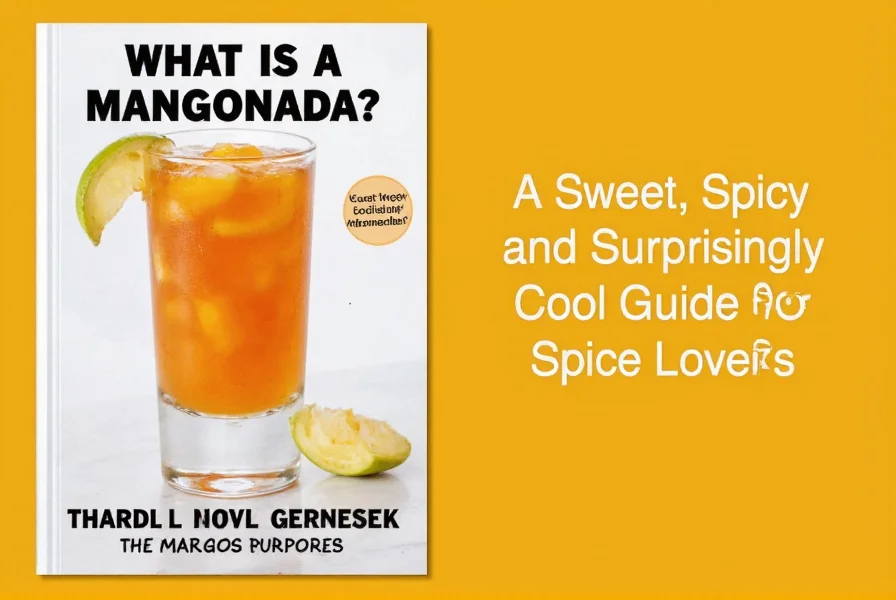Table of Contents
A mangonada is a traditional Mexican beverage made from fresh mango, chili powder, lime juice, and salt. It's known for its unique combination of sweet, spicy, and tangy flavors, and has become popular worldwide for its refreshing taste. This guide explains everything you need to know about mangonadas, including their origin, flavor profile, how to make them at home, and more.
What Is a Mangonada?
A mangonada is a vibrant, fruit-based beverage that originated in Mexico's tropical regions, particularly in states like Oaxaca and Veracruz where mangoes are abundant. It's deeply rooted in Mexican street food culture and represents the fusion of indigenous ingredients with colonial influences. The word 'mangonada' comes from the Spanish word 'mango' and the suffix '-nada,' meaning 'a little bit' or 'something' - though it delivers a big flavor punch.
Unlike simple mango smoothies, mangonadas feature a distinctive sweet-spicy-tangy profile achieved through careful balancing of ingredients. Authentic versions typically include ripe mango, chili powder (often ancho or guajillo varieties), fresh lime juice, and sea salt. Some traditional recipes also incorporate tamarind or a pinch of cinnamon for added complexity.
The Flavor Profile of a Mangonada
The taste of a mangonada unfolds in distinct layers: the initial sweetness of perfectly ripe mango, followed by a bright tang from fresh lime juice, then a warm, gradual heat from chili powder, and finally a savory note from salt that enhances all other flavors. This complex profile creates a refreshing yet satisfying beverage that's both exotic and approachable.
| Ingredient | Flavor Contribution |
|---|---|
| Mango | Sweet, fruity, juicy |
| Chili Powder | Spicy, warm, slightly smoky |
| Lime Juice | Tart, acidic, refreshing |
| Salt | Enhances sweetness and spiciness |

The Origin and Cultural Significance of Mangonadas
Mangonadas have been a staple of Mexican street food culture for decades, particularly in regions with abundant mango harvests. The drink emerged from the creative fusion of indigenous ingredients (like native mango varieties) and colonial-era influences (such as chili peppers introduced by Spanish settlers). Traditional mangonadas are typically served in small cups or glasses with a sprinkle of chili powder on top, often sold by street vendors during hot summer months.
Beyond its refreshing taste, the mangonada represents Mexican culinary ingenuity - transforming simple ingredients into a complex flavor experience. In Mexico, it's commonly enjoyed as a palate cleanser or afternoon refreshment, and has recently gained international popularity through social media and food tourism.
How to Make a Mangonada at Home
Creating an authentic mangonada at home requires quality ingredients and proper technique. Follow these expert tips for the best results:
- Ingredients:
- 1 ripe Ataulfo mango (peeled and diced) - preferred for its creamy texture and intense sweetness
- 1/2 teaspoon ancho chili powder (adjust for heat preference)
- 1 tablespoon fresh lime juice (bottled juice lacks brightness)
- 1/2 teaspoon fine sea salt
- 1/4 cup ice cubes
- Optional: 1/4 teaspoon ground cinnamon for depth
- Instructions:
- For optimal flavor, blend mango chunks with lime juice and salt first until smooth
- Add chili powder and blend again to evenly distribute heat
- Finally, add ice and blend until slushy consistency is achieved
- For traditional presentation, pour into a glass with a salted rim and sprinkle extra chili powder on top
Pro tip: Use frozen mango chunks instead of fresh for a thicker, colder texture without dilution. For a vegan version, simply omit any dairy-based additions (though traditional mangonadas are naturally vegan).

Buying Guide: Finding the Best Mangonada Ingredients
Quality ingredients are essential for an authentic mangonada. Here's how to select each component:
1. Mango
Ataulfo mangoes (also called honey or champagne mangoes) are ideal for mangonadas due to their rich flavor and smooth texture. Look for mangoes that are slightly soft when gently pressed, with a sweet aroma near the stem. Avoid green or rock-hard mangoes, as they lack sweetness.
2. Chili Powder
For authentic flavor, choose ancho or guajillo chili powder. Ancho provides mild heat with fruity notes, while guajillo offers slightly more complexity. Avoid generic "chili powder" blends that may contain fillers like cumin or garlic powder. Look for pure chili powder with a vibrant red color and no clumping.
3. Lime
Always use fresh limes - Sunkist or Meyer limes work well. Select limes that feel heavy for their size with smooth, bright green skin. Avoid limes with soft spots or wrinkled skin. Squeeze just before use for maximum freshness.
4. Salt
Fine sea salt or Himalayan pink salt works best. Avoid iodized table salt, which can impart a metallic taste. The salt should enhance rather than overpower the other flavors.
| Ingredient | Recommended Brands | Why They Work |
|---|---|---|
| Mango | California Organic, Tropicana | Fresh, high-quality, and flavorful |
| Chili Powder | McCormick, Simply Organic | Consistent quality and good flavor |
| Lime | Whole Foods, Sunkist | Fresh and juicy |
| Salt | Kosher Sea Salt, Pink Himalayan | Enhances flavor without overpowering |

Frequently Asked Questions About Mangonadas
What exactly is a mangonada?
A mangonada is a traditional Mexican beverage made with ripe mango, chili powder, lime juice, and salt. It's known for its unique combination of sweet, spicy, and tangy flavors that create a refreshing and complex taste experience.
Is a mangonada alcoholic?
Traditionally, a mangonada is a non-alcoholic beverage. However, some modern variations may include alcohol like tequila or mezcal to create a cocktail version. The classic street-style mangonada found in Mexico is always non-alcoholic.
How spicy is a mangonada?
The spiciness of a mangonada can be adjusted to personal preference. Typically, it has a mild to moderate heat from the chili powder that complements rather than overwhelms the sweet mango flavor. The heat usually builds gradually after the initial sweet taste.
What does mangonada taste like?
A mangonada offers a complex flavor profile that begins with the sweetness of ripe mango, followed by a tangy lime note, and finishes with a warm, spicy kick from the chili. The salt enhances all these flavors, creating a balanced and refreshing beverage.
Where did mangonada originate?
Mangonadas originated in Mexico, particularly in regions where mangoes grow abundantly like Oaxaca and Veracruz. They're deeply rooted in Mexican street food culture and represent the fusion of indigenous ingredients with colonial influences.
How is a mangonada different from a regular mango smoothie?
Unlike a regular mango smoothie which is typically just sweet, a mangonada includes chili powder and salt, creating a sweet-spicy-tangy flavor profile. This distinctive combination of flavors is what sets mangonadas apart from ordinary fruit smoothies.
Can I make a mangonada without a blender?
Yes, you can make a simpler version without a blender by mashing ripe mango with a fork, then mixing in the chili powder, lime juice, and salt. For a smoother texture, you might need to strain the mixture, but the traditional street-style mangonada often has a slightly chunky texture.
Is mangonada healthy?
Mangonadas made with fresh ingredients can be quite healthy. Mango provides vitamins A and C, while the small amount of chili powder may offer metabolism benefits. When made without added sugars, it's a nutritious beverage, though like any food, moderation is key.
What are some popular mangonada variations?
Popular variations include adding coconut water for tropical flair, using tamarind paste for extra tang, or incorporating a splash of tequila for an adult version. Some Mexican vendors also serve mangonadas with chamoy sauce for an extra layer of complexity.
Conclusion
In conclusion, a mangonada is more than just a drink—it's a celebration of Mexican culinary tradition and flavor innovation. With its perfect balance of sweet, spicy, and tangy notes, it's a must-try for anyone who loves bold and unique beverages. Whether you're a seasoned spice enthusiast or just curious about new tastes, the mangonada offers something for everyone.
So next time you're looking for a refreshing and exciting drink, give the mangonada a try. You might just find your new favorite beverage!

Remember, the key to a great mangonada lies in the quality of your ingredients and your willingness to experiment. Happy sipping!










 浙公网安备
33010002000092号
浙公网安备
33010002000092号 浙B2-20120091-4
浙B2-20120091-4